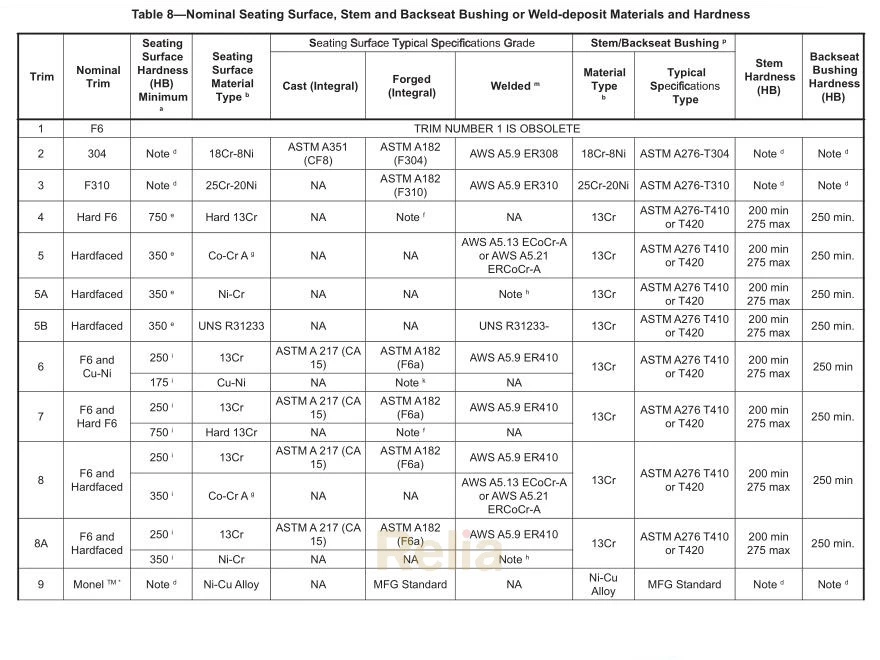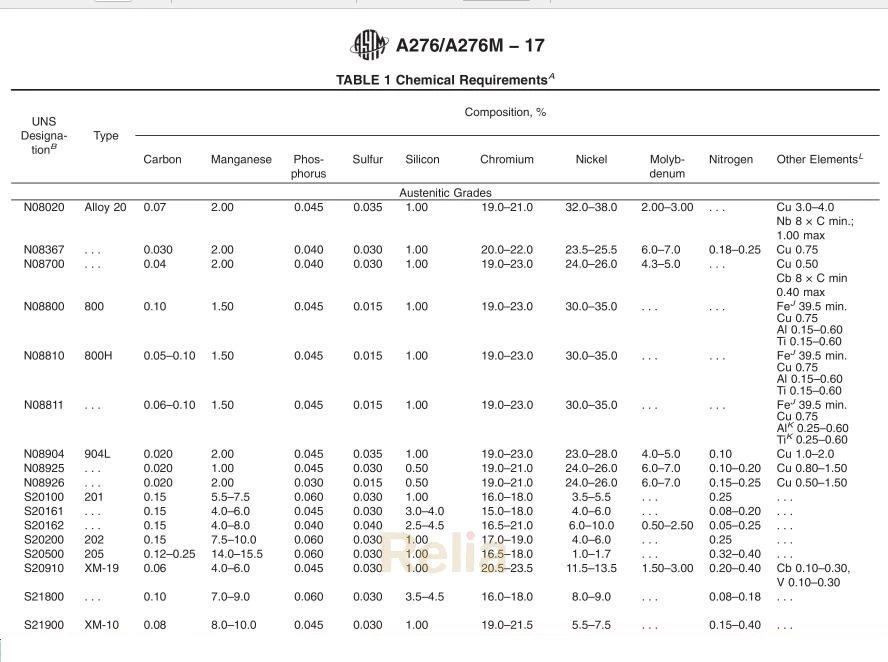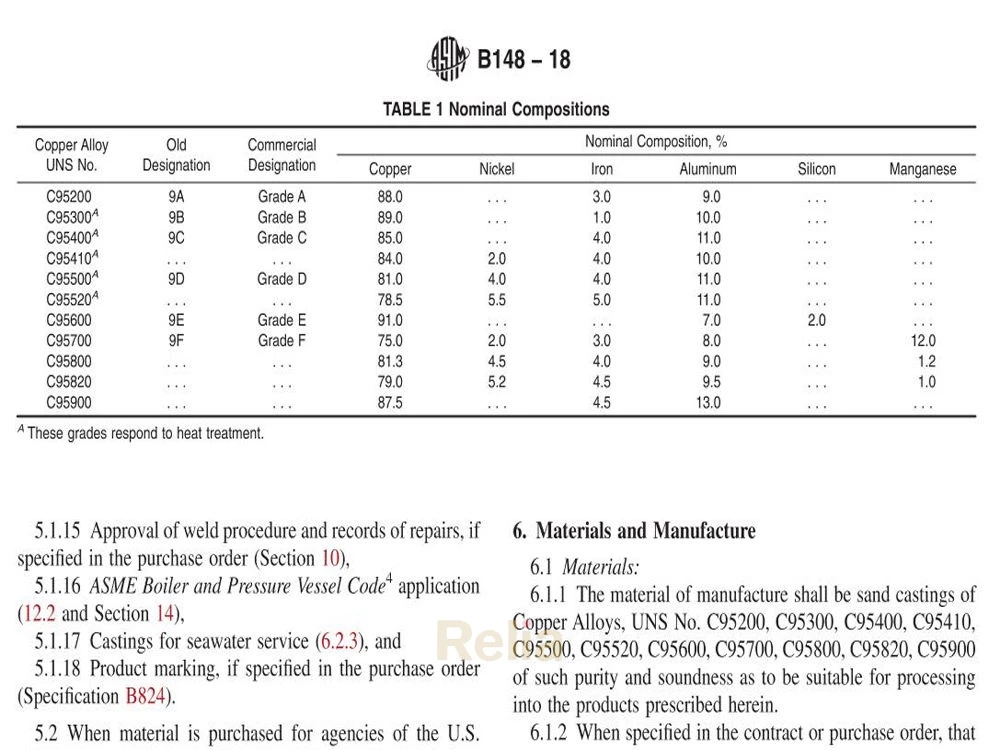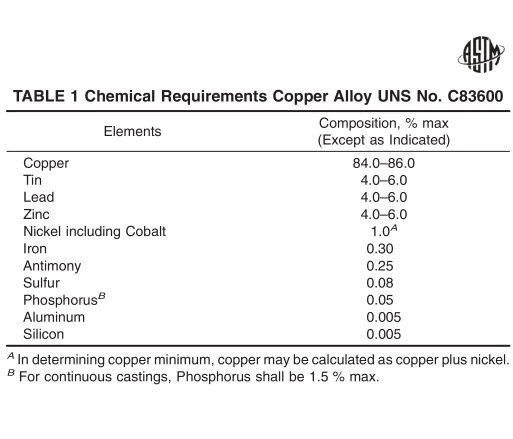ASTM A193 Chemical Composition, Mechanical Properties
ASTM A193 specifies the chemical composition and mechanical properties of ASTM A193, B7, B7M, B16, B8, B8M etc.
ASTM A193 specification covers alloy and stainless steel bolt- ing materials and bolting components for pressure vessels, valves, flanges, and fittings for high temperature or high pressure service, or other special purpose applications. See Specification A962/A962M for the definition of bolting. Bars and wire shall be hot-wrought and may be further processed by centerless grinding or by cold drawing. Austenitic stainless steel may be carbide solution treated or carbide solution treated and strain-hardened. When strain hardened austenitic stainless steel is ordered, the purchaser should take special care to ensure that Appendix X1 is thoroughly understood.
ASTM A193 Chemical Composition
| Ferritic Steels | |||||||||||||||
| Grade | Description and UNS Designation | Class | Carbon | Manganese | Phosphorus | Sulfur | Silicon | Chromium | Nickel | Molybdenum | Cooper Columbium | Titanium | Vanadium | Aluminum | Nitrogen |
| B5 | 5 % Chromium | 0.10 min | 1.00 | 0.040 | 0.030 | 1.00 | 4.0-6.0 | … | 0.40-0.65 | … | ... | … | … | … | |
| Product Analysts VariationB |
0.01 | 0.03 | 0.005 | 0.005 | 0.05 | 0.10 | … | 0.05 | … | … | … | … | … | ||
| B6, B6X | 12% Chromium (410), S41000 | 0.08-0.15 | 1.00 | 0.040 | 0.030 | 1.00 | 11.5-13.5 | … | … | … | … | … | … | … | |
| Product Analysis VariationB | 0.01 over | 0.03 | 0.005 | 0.005 | 0.05 | 0.15 | … | … | … | … | … | … | … | ||
| B7, B7M | Chromium- MolybdenumC | 0.38-0.48° | 0.75-1.00 | 0.035 | 0.040 | 0.15-0.35 | 0.80-1.10 | … | 0.15-0.25 | … | ... | … | … | … | |
| Product Analysis VariationB | 0.02 | 0.04 | 0.005 | 0.005 | 0.02 | 0.05 | … | 0.02 | … | … | … | … | … | ||
| B16 | Chromium- Molybdenum-Vanadium | 0.36-0.47 | 0.45-0.70 | 0.035 | 0.040 | 0.15-0.35 | 0.80-1.15 | … | 0.50-0.65 | … | … | 0.25-0.35 | 0.015E | … | |
| Product Analysis VariationB | 0.02 | 0.03 | 0.005 | 0.005 | 0.02 | 0.05 | … | 0.03 | … | … | 0.03 | … | … | ||

Note:
A. Yield strength shall be determined by the 0.2 % offset method in accordance with Test Methods and Definitions A370 or Test Methods A1058. An alternative method of determining yield strength may be used based on a total extension under load of 0.5 %.
B. For some specific products, it may not be practicable to use a 2-in. or 50-mm gage length. The use of sub-size test specimens, when necessary, is permissible in accordance with Test Methods and Definitions A370 or Test Methods A1058.
C. Reduction of area does not apply on flat bars 3 ⁄ 1 6 in. [4.76 mm] and under in thickness as this determination is not generally made in this product size.
D. The material shall be capable of meeting the required reduction of area where listed, but actual measurement and reporting of the reduction of area are not required unless specified in the purchase order.
E. Or equivalent Rockwell hardness (HRB or HRC).
F. For extruded shapes of all Cr-Ni grades of Condition A, the yield strength shall be 25 ksi [170 MPa] min and tensile strength shall be 70 ksi [480 MPa] min.
G. For shapes having section thickness of 1 ⁄ 2 in. [12.5 mm] or less, 30% min. elongation is acceptable.
H. Material shall be capable of being heat treated to a maximum Brinell hardness of 250 HBW when oil quenched from 1750°F [950°C].
ASTM A193 Mechanical Properties
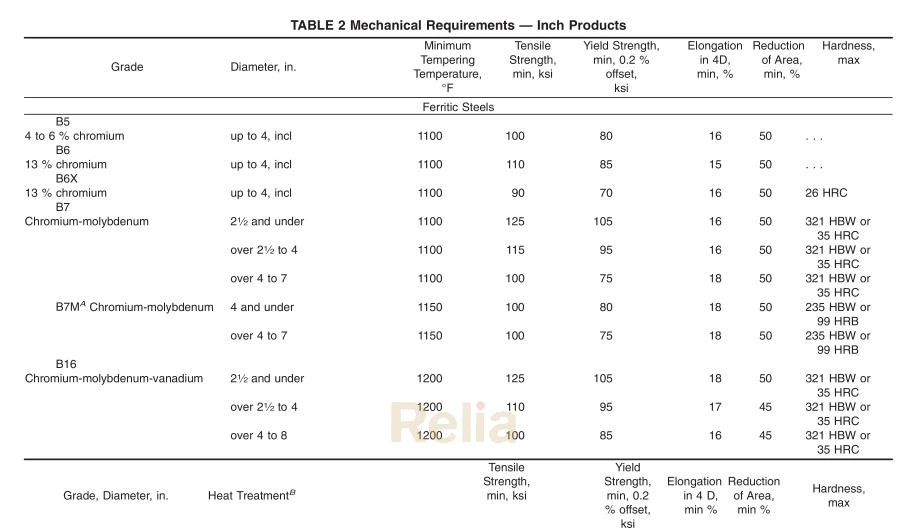
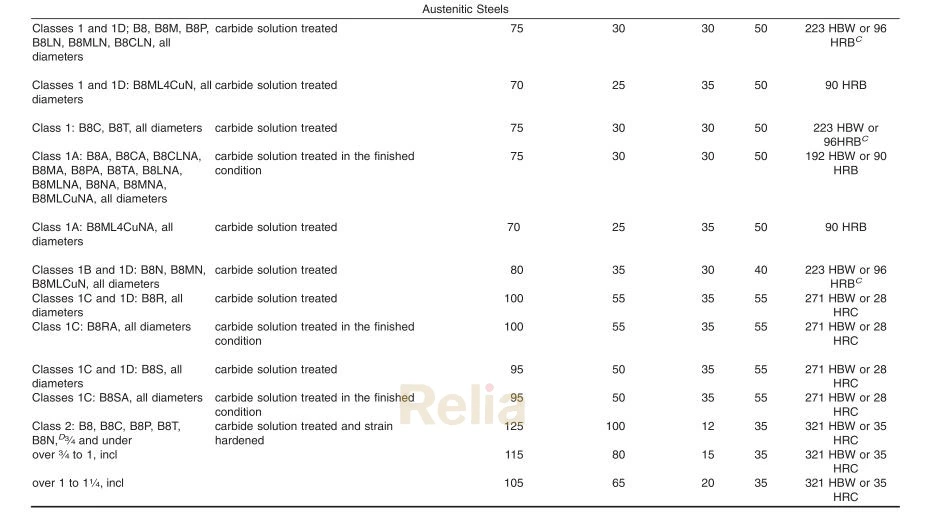
Note:
A. To meet the tensile requirements, the Brinell hardness shall be over 200 HBW (93 HRB).
B. Class 1 is solution treated. Class 1A is solution treated in the finished condition for corrosion resistance; heat treatment is critical due to physical property requirement.
Class 2 is solution treated and strain hardened. Austenitic steels in the strain-hardened condition may not show uniform properties throughout the section particularly in sizes over 3 ⁄ 4 in. in diameter.
C. For sizes 3 ⁄ 4 in. in diameter and smaller, a maximum hardness of 241 HBW (100 HRB) is permitted.
D. For diameters 1-1 ⁄ 2 and over, center (core) properties may be lower than indicated by test reports which are based on values determined at 1 ⁄ 2 radius.
